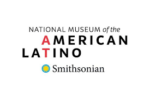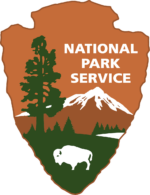History/Social Studies Curriculum
To ensure that voices are amplified and that the stories of everyday people are empowered amidst opposition, Teaching for Change has created the Civil Rights Teaching website. The website offers lessons, handouts, resources, and news to implement in classroom teaching to engage students in their own knowledge and community activism. Teaching for Change is an active partner in the Freedom Movement Educational Initiative.
Sponsored by North Carolina State University, the Virtual Martin Luther King, Jr. Project (vMLK) developed as a pilot project. The vMLK team in conjunction with faculty at Southease Raleigh Magnet High School developed a website with resources intended to offer learning experiences and no-cost professional development opportunities for North Carolina teachers and students grades 8-12.
EDSITEment offers resources for K-5 to discuss art, culture, history, and legacy of the Anishinaabe, Ojibwe, Chippewa tribal nations. Intended to support student knowledge in diverse people groups, this resource encourages differentiated and accurate understanding of those living throughout lands referred to as North and South America. Additional links are provided on the resource site to extend learning as well as guiding questions.
In celebration and honor of Native Heritage Month, the National Educational Association (NEA) offers year-round resources to share the narrative of Indigenous People groups.
Resources include lesson plan units for children grades Kindergarten through 12 that focus on history, accurate representation, Thanksgiving lesson plans from the Native American perspective, background resources, printables/posters, videos, and recommended readings. The curated collection is in partnership with organizations centered in social justice and advocacy.
NEA Note: “Educators should be mindful of cultural appropriation when teaching about other cultures and understand that Native American students in class may experience lessons differently than non-Native students.”
A Native woman-led racial and social justice organization, IllumiNative has created free resources (in partnership with the National Indian Education Association and Amplifier) that increase the visibility of and challenge the negative narratives of Indigenous peoples.
Resources available include youth and adult publications centered in advocacy, awareness, and research. Lesson plans include remote learning opportunities that explore the work of Indigenous leaders and changemakers in digital tool formats for grades PreKindergarten through 8th grades.
The Southern Poverty Law Center (SPLC) engages audiences in a community education program, Learning for Justice. This resource provides educators with free resources to encourage youth civic participation as well as to learn honest history, promote servant leadership, and move toward a racially and socially just society.
This collection of resources has been curated by SPLC to offer lessons for elementary and middle school classrooms that focus on elections and voting.
Generation Citizen has created a resource designed to inform, support, and empower youth voices in the act of civic engagement and voter registration. Specific state-by-state information is also provided for the following locations: California; Kentucky; New York; Massachusetts; Pennsylvania; Rhode Island; Oklahoma; Texas; and Washington. A mini-lesson plan on voter registration is included.
The National Museum of the American Latino in partnership with the Smithsonian offers Hispanic Heritage Month Resources for the community to join in the celebration from September 15 – October 15. This resource offers virtual exhibits, educational resources, as well as discussions about the importance of celebrating Hispanic Heritage Month.
Sponsored in partnership with The Myron and Alayne Meilman Family Foundation, the Museum of Jewish Heritage: A Living Memorial to the Holocaust offers 11 free lesson plans for educators to use when discussing the Holocaust, social justice, and advocacy. This museum curriculum collection also offers a guide for educators using the resource.
The development of this resource was further supported by the New York City Department of Education.
“Separate but equal” laws segregated society and culture in the United States for the first half of the 20th century. After World War II, the tide began to turn and one place where Americans saw a change was in professional sports. In 1946, African American baseball player and military veteran Jackie Robinson became the first black man to play on a white team in a segregated league. With support from his wife and community, he broke that “color barrier” during spring training in Daytona Beach, Florida, at the City Island Ballpark.
Robinson earned the title Rookie of the Year in 1947, played in the World Series in 1955, and was a passionate Civil Rights activist when his athletic career ended. The “City Island Ballpark” is listed on the National Register of Historic Places for its association with him and renamed in his honor. This lesson explores Jackie Robinson’s life and the events of 1946, racism and “Jim Crow,” pop culture’s influence on a nation of laws, and the historic beachfront ballpark.
This lesson can be used in U.S. history, social studies, and other curricula that examine African American history and civil rights in the United States following World War II.
Explore the history, arts, and culture of Filipino Americans in the United States. From veterans to Tony award winners, from labor movement leaders to gold medalists, we invite you to discover the rich and diverse stories, people, and history of Filipino American culture.
Explore all of the resources the National Women’s History Museum has created. There are lesson plans, biographies, posters, primary sources, and more. You can search by topic, theme, or resource type.








